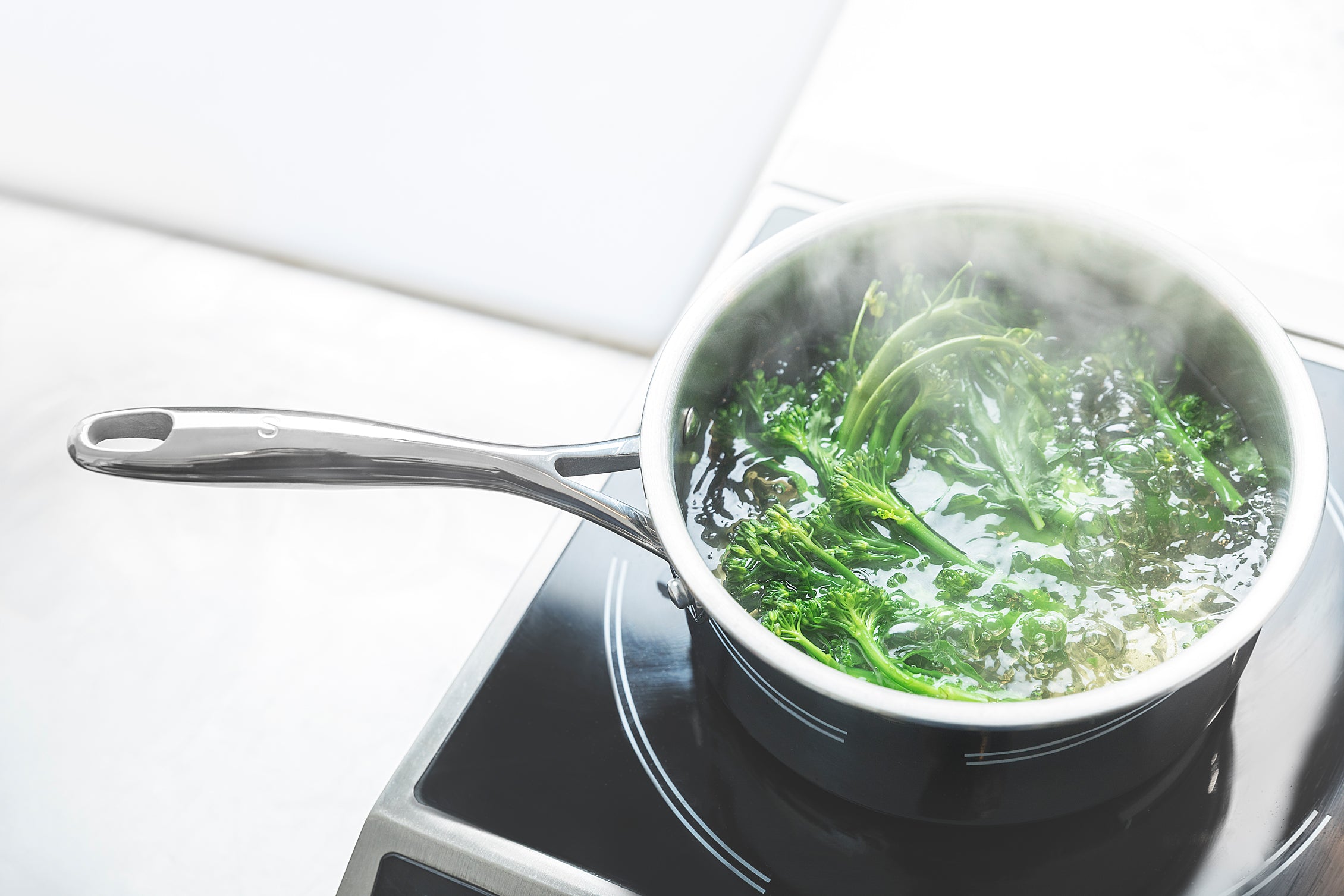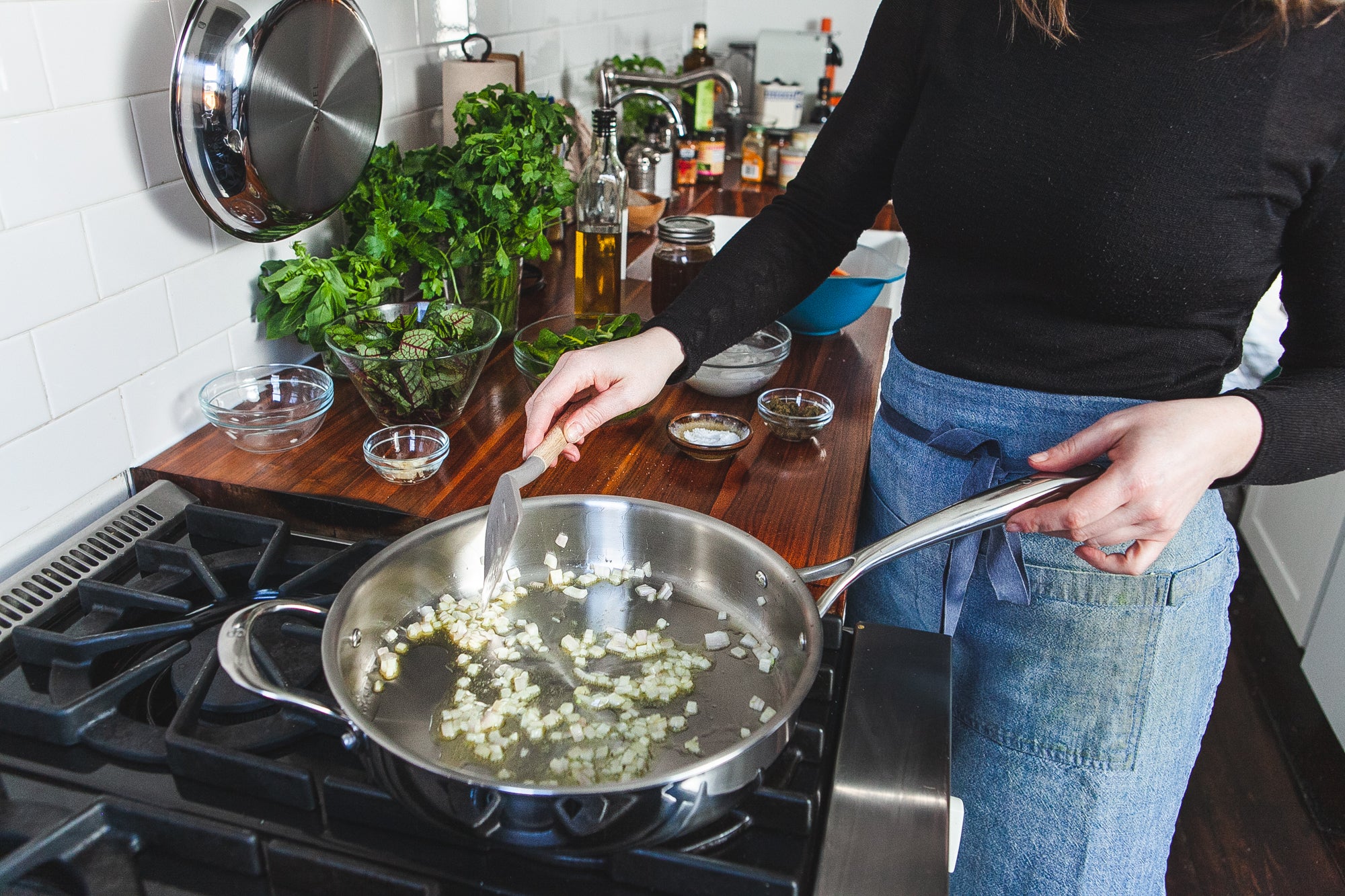
What is a saucepan?
The ultimate kitchen utility player. Learn more about why.
What is a saucepan?
A saucepan is a type of cookware with a flat, circular bottom, tall, vertical sidewalls, and an extended handle, similar to that of a skillet. A saucepan is technically a pan, not a pot - but it is deeper than a skillet and sauté pan, yet not as deep as a pot. Its depth and tall, vertical sidewalls make a saucepan ideal for cooking liquids and liquid cooking techniques (which is why a saucepan is sized by volume, typically between 2 and 4 quarts).
Saucepans usually come with a lid to keep heat inside, which is often necessary for the cooking tasks best suited for saucepans. And while saucepans are made with a wide range of materials, we like saucepans that are manufactured using a 5-ply stainless steel construction, which results in a durable pan that distributes heat effectively.
How should I use a saucepan?
Often overlooked by home cooks and frequently confused for a pot, a saucepan is a key component of any well-outfitted kitchen. While not as talked-about as cookware workhorses like skillets and sauté pans, saucepans tackle a wide variety of tasks in the kitchen and play an important supporting role in most meal-time productions.

Here is how you can use a saucepan:
How does a saucepan differ from other pots and pans?
Saucepans differ from your other types of cookware in several important ways.
For instance, while a saucepan is in some ways just a smaller variety of a pot, there are important differences between a saucepan and your typical stockpot. A saucepan has a long extended handle - like a skillet or sauté pan - whereas a pot typically has two looped handles on opposite sides. This is because a pot is used to heat much larger amounts of liquid than a saucepan, and therefore a pot needs handles that are easier to manage when transferring a larger, heavier load. Saucepans are designed for less volume-intensive liquid cooking methods, and because they’re frequently used to make sauces, the longer extended handle is more appropriate for cooking techniques that require frequent, fast-paced stirring.
A saucepan is also quite different from a skillet and a sauté pan. Skillets and sauté pans are much wider and shallower than saucepans, which make them better suited for searing, sautéing, braising, and pan roasting. And while a sauté pan, has vertical sidewalls just like a saucepan, it’s too shallow for many of the liquid-focused cooking methods that are more appropriate for a saucepan.Shop Saucepan




